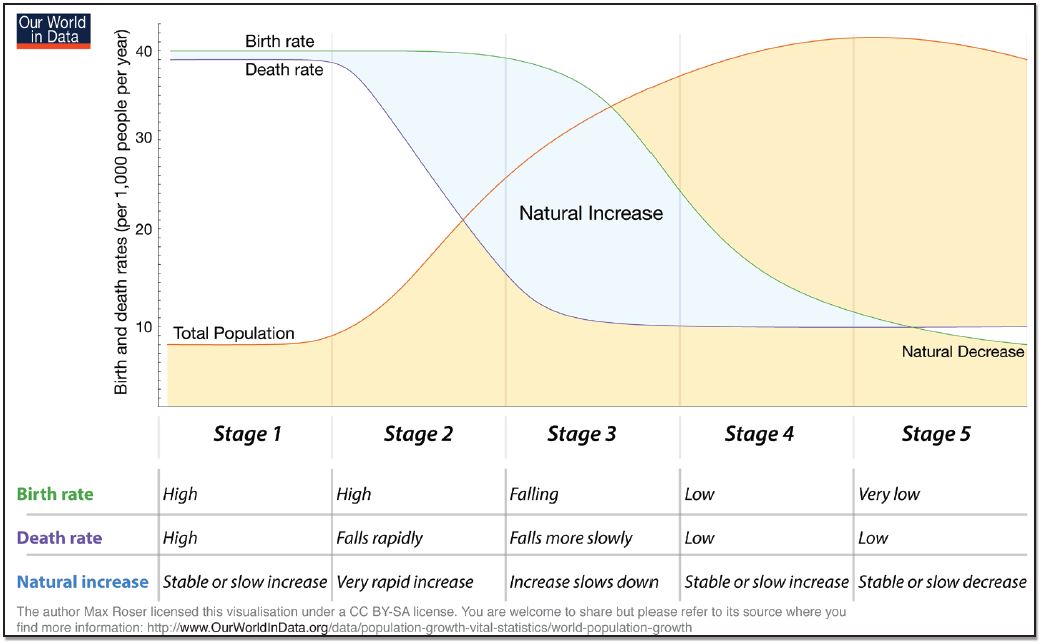16 2.5 THE DEMOGRAPHIC TRANSITION
Geographers have modeled the population dynamics of places for decades. The result of these models is called the Demographic Transition model (Figure 2.16). It describes a series of stages that societies pass through as they develop and industrialize. These models represent the general demographic conditions that countries experience.

Figure 2.16 | Demographic Transition Model
Author | Max Roser
Source | Wikimedia Commons
License | CC BY SA 4.0
In Stage One, which is pre-modern, birth rates are high, and death rates are high. As a result of these two factors, the population remains low, but stable.
By Stage Two as the society industrializes food becomes more steadily available, water supplies get cleaner and sanitation and medical care improves. Death rates fall, particularly infant mortality rates. However, there is a lag in the decline in birth rates. It takes time for people to adjust to the new reality of urban industrial life. Since the birth rate is still high and the death rate is low, population grows very rapidly.
Stage Three is characterized by a falling birth rate as the society begins to find an equilibrium between birth and deaths. The birth rates are still higher than death rates and population continues to increase. This continuation of population increase is known as population momentum. The end of Stage Three is characterized by the general balance between births and deaths.
Stage Four shows a return to population stability, but at a much greater number of people.
